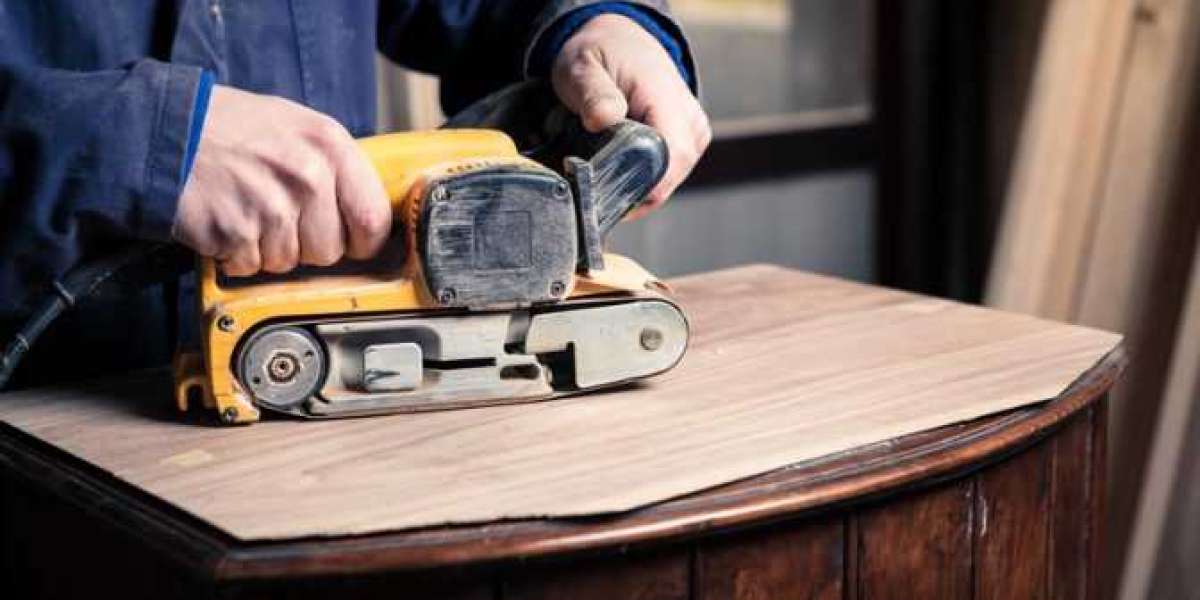A belt sander is a powerful tool essential for woodworking and metalworking, designed to smooth and finish surfaces with ease. Whether you're a DIY enthusiast or a professional craftsman, selecting the right belt sander is crucial for achieving optimal results. This guide provides expert tips on what to look for when buying a belt sander and highlights why Purchaser is an excellent platform for finding the perfect sander to suit your needs.
Understanding the Basics of a Belt Sander
A belt sander uses a continuous loop of sandpaper to remove material from surfaces quickly. It is particularly effective for large, flat areas and is often used for tasks like levelling and smoothing wooden surfaces or removing old finishes. Choosing the right belt sander can greatly impact the quality and efficiency of your work.
Key Features to Consider When Buying a Belt Sander
Belt Size
- Overview: Belt size determines the amount of surface area the sander can cover in one pass. Common sizes include 3x18 inches, 4x24 inches, and 4x36 inches.
- Tip: Larger belts cover more area but may be harder to maneuver. Choose a size based on your specific project needs and workspace.
Motor Power
- Overview: The power of the motor, usually measured in amps, affects the sander's performance. Higher power means better performance for tough materials.
- Tip: For heavy-duty tasks, look for sanders with higher amperage (8-12 amps). For lighter projects, a lower-powered sander may suffice.
Belt Speed
- Overview: Belt speed, measured in feet per minute (FPM), influences how quickly the sander removes material. Variable speed settings allow for greater control.
- Tip: Choose a sander with variable speed options for versatility in different sanding applications.
Dust Collection System
- Overview: Effective dust collection helps maintain a clean workspace and improves visibility. Most sanders come with a dust bag or can be connected to a shop vacuum.
- Tip: Opt for a sander with a good dust collection system to minimise cleanup and maintain a healthier working environment.
Ergonomics and Design
- Overview: Comfort and ease of use are important, especially for extended use. Consider factors like handle design, weight, and balance.
- Tip: Look for sanders with ergonomic handles and adjustable grips to reduce fatigue and improve manoeuvrability.
Belt Tracking and Adjustment
- Overview: Belt tracking mechanisms ensure the belt runs straight and does not slip. Easy adjustment features help maintain proper alignment.
- Tip: Choose a sander with an easy-to-adjust tracking system to ensure consistent sanding results.
Build Quality and Durability
- Overview: The construction of the sander affects its longevity and performance. Durable materials and robust design contribute to a longer lifespan.
- Tip: Invest in a well-built sander from a reputable brand to ensure reliability and durability.
Why Purchaser is the Best Place to Buy a Belt Sander
Purchaser offers a wide selection of belt sanders, catering to various needs and budgets. Here’s why it’s the ideal platform for your purchase:
Competitive Pricing
Purchaser provides competitive prices on a range of belt sanders, ensuring you get the best value for your money.
Wide Selection
The platform features a diverse array of belt sanders from leading brands, allowing you to find the perfect match for your requirements.
Ease of Shopping
With a user-friendly interface, Purchaser makes it easy to compare options, read reviews, and make informed decisions.
Reliable Delivery
Enjoy reliable shipping and delivery options, ensuring your belt sander arrives promptly and in excellent condition.
How to Choose the Right Belt Sander for Your Needs
Assess Your Projects
Consider the types of projects you'll be working on and the material you'll be sanding. Match these needs with the features of the sander.
Set a Budget
Determine your budget and look for sanders that offer the best features within your price range.
Read Reviews:
Check customer reviews and ratings to gauge the performance and reliability of different sanders.
Conclusion
Choosing the right belt sander is essential for achieving high-quality results in your sanding projects. By considering key features such as belt size, motor power, and dust collection, you can select a sander that meets your needs. Purchaser provides a valuable resource for finding top-quality belt sanders at competitive prices, making it an excellent platform for your next purchase. Invest in the right tool to enhance your craftsmanship and complete your projects with precision.








